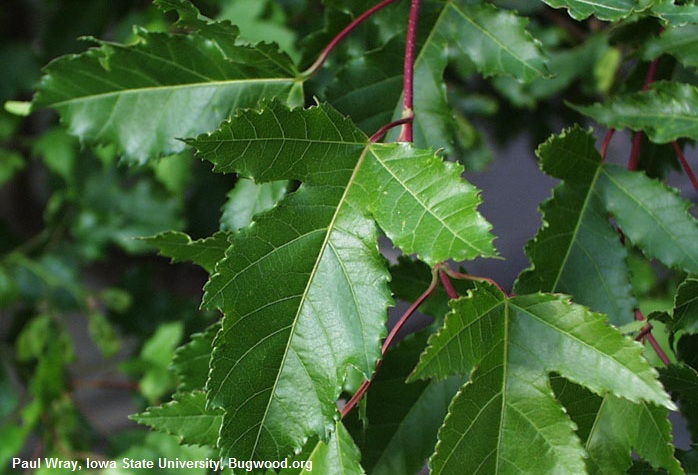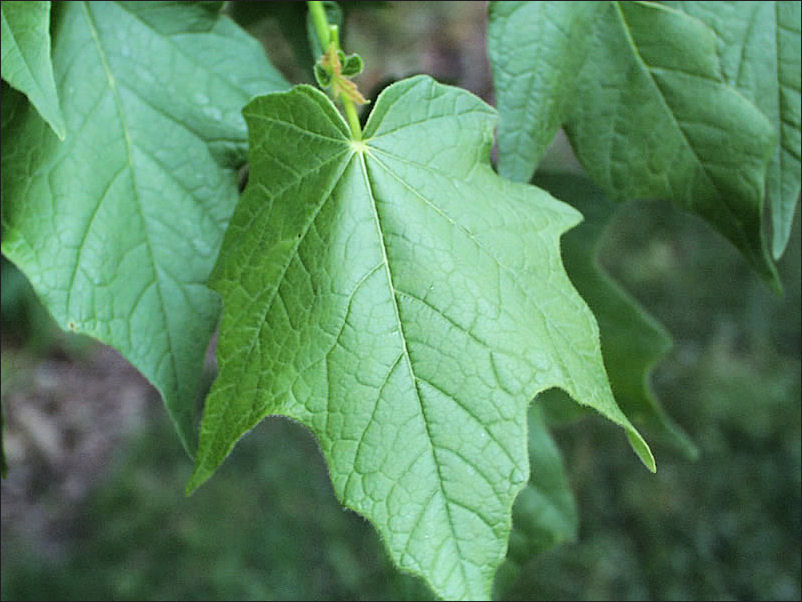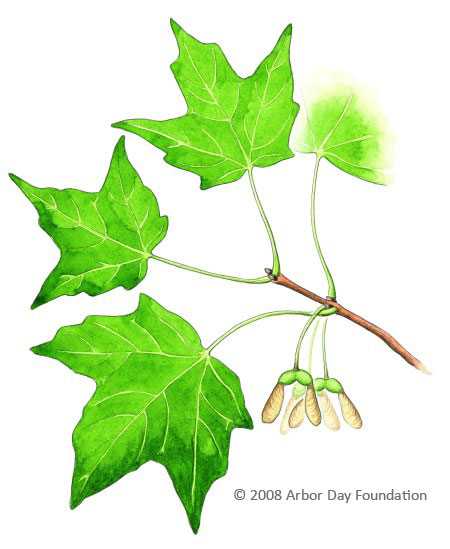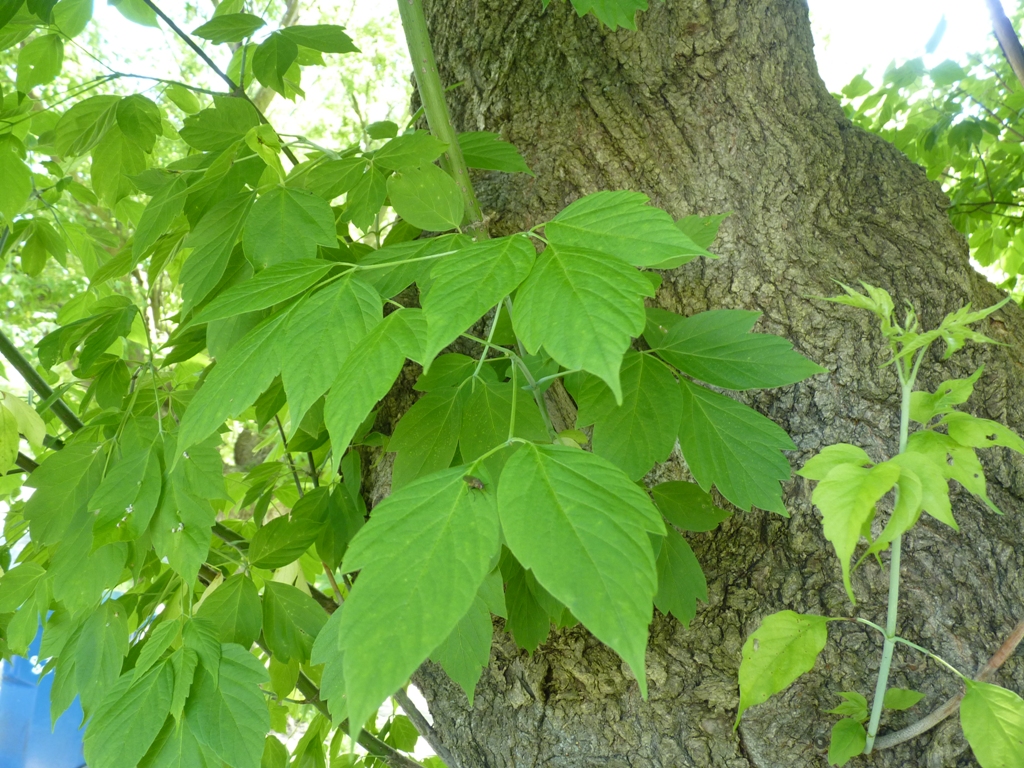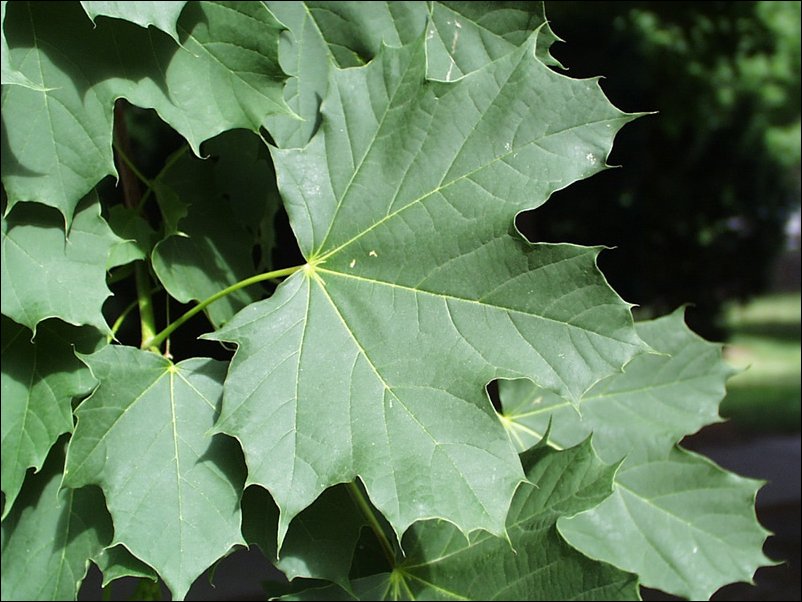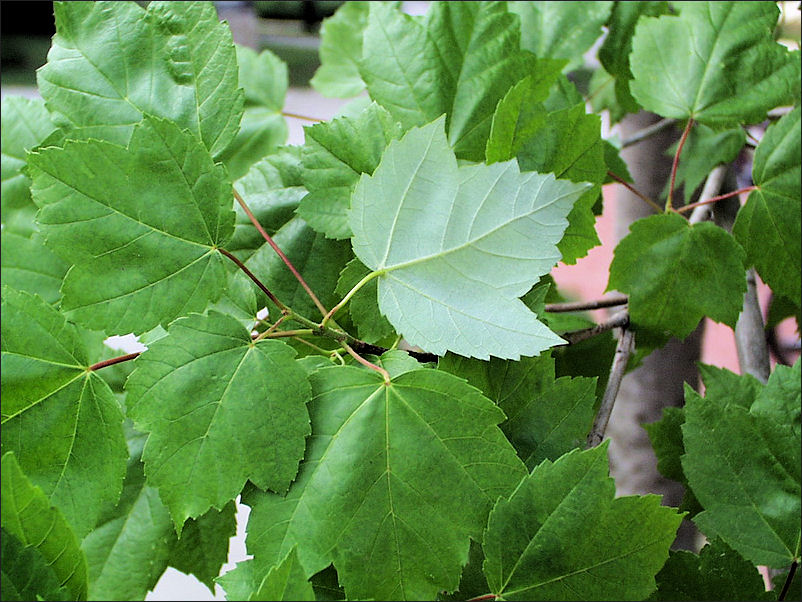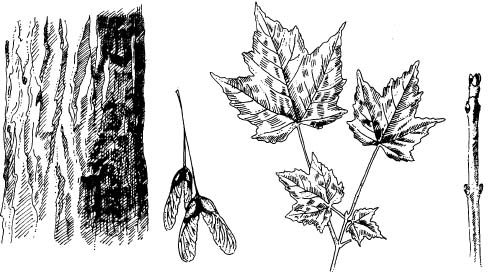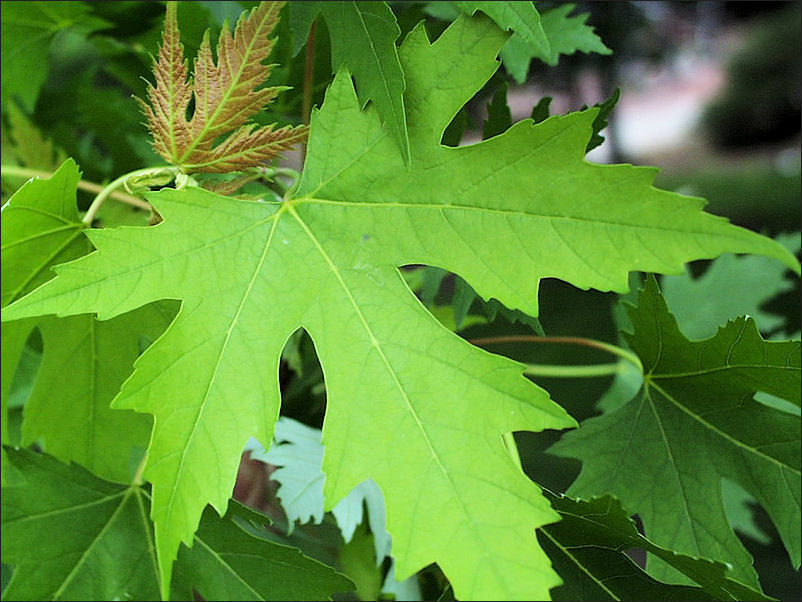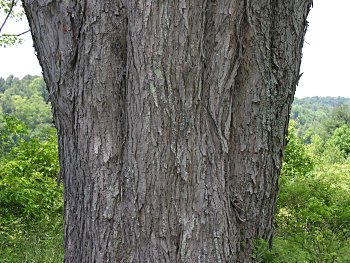Here are things to look for in your silver maple trees:
- Leaves yellowing in spring or summer
- Loss of leaves at the top of the trees
- Spotting on the leaves
Sapindaceae Family
Common Name: Amur maple
Scientific name: Acer ginnala
Leaves: Opposite arrangement, simple, 2-3.5" long, 1.25-2.5'' broad, deeply palmate lobes, double serrate edges
Bark: Thin dull gray-brown, and smooth at first becoming shallowly fissured on older plants
Height: 9-30" max
Spread: 15-35'
General info: This bush/small tree is a prize tree in many countries including the UK. In Northern USA this plant is considered an invasive species. Often used as a natural boarder these fast growing plants can survive in harsh weather conditions.
Pests and diseases: Verticillium wilt
Common Name: Black maple
Scientific name: Acer nigrum
Leaves: 3 lobed leaf, droopy appearance,
Bark: Dark gray brown deeply grooved
Height: 70-110' tall at max
Spread: 40-80'
General info: This tree is often mistaken with sugar maple and many consider it a hybrid sugar maple. Some slight differences are noticeable if you know what to look for. Can be used to make maple syrup and other maple flavored foods.
Pests and diseases: Verticillium wilt, boring insects, aphids are some of the many diseases of black maples.
Common Name: Box elder
Scientific name: Acer negundo
Leaves: Pinnate compound leaves, 3-7 leaflets, 2-4" long, 1.2-3" broad, light green
Bark: Rough dark gray bark at maturity
Height: 33-82' max
Spread: 25-45'
General info: The ugly step sister of the maples. These trees are known for some of the worst characteristic. The most noted is always the box elder bugs. These can be found commonly in many places all over the world. Do really well in many different soil structures and hard to kill.
Pests and diseases: Box elder bugs :(
Common Name: Norway maple
Scientific name: Acer platanoides
Leaves: In pairs, dark green, palmate
Bark: Smooth but becomes black, rigid and furrowed with age
Height: 90' max.
Spread: 60'
General info: Another tree that is mistaken with sugar maple. Norway maples are not indigenous to USA. They come primarily from Europe.
Common Name: Red maple
Scientific name: Acer rubrum
Leaves: 3.5-4.25" long and broad, varying shades of red, opposite arrangement
Bark: Dark gray and raised long plates
Height: 59-89' max.
Spread: 40'
General info: Very easy to spot a red maple. Maybe one of the easiest trees to diagnose with leaves on the tree. Bark is also very distinctive to the trained eye. They make for a great shade tree with a statement but very difficult to keep alive.
Common Name: Silver maple
Scientific name: Acer saccharium
Leaves: Simple, palmate, 5 lobed leaf, deep angular notches between lobes.
Bark: Light gray and very scaly with age.
Height: 49-82' max.
Spread: 36-50'
General info: Silver maple or commonly called soft maple are very fast growing trees. These trees love water and are also called water maple. Tend to branch very low or have multiple stems. These trees do really well in wind with great elasticity. Many hybrids are used with silver maple because of its disease resistance.



Common Name: Sugar maple
Scientific name: Acer saccharum
Leaves: 7.9" long and broad, Palmate shape, deep green color, short petiole
Bark: Light to dark gray in color, shallow fissured and scaly.
Height: 82-115' max.
Spread: 60-100'
General info: A very prized tree of the landscape for its shade value and perfectly round shape. These trees are hard to keep living but worth the effort. Used in forests to make maple syrup.
